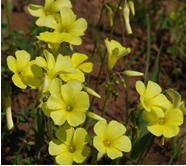Taxonomy and introduction histories of non-native Prosopis populations for their effective management
Trees in the genus Prosopis (known as mesquite) have been widely planted outside of their native ranges in many countries, and many species are now among the world’s worst woody invasives. The genus contains 44 species from the Americas, South West Asia and North Africa, and several have become major problems in South and East Africa.


